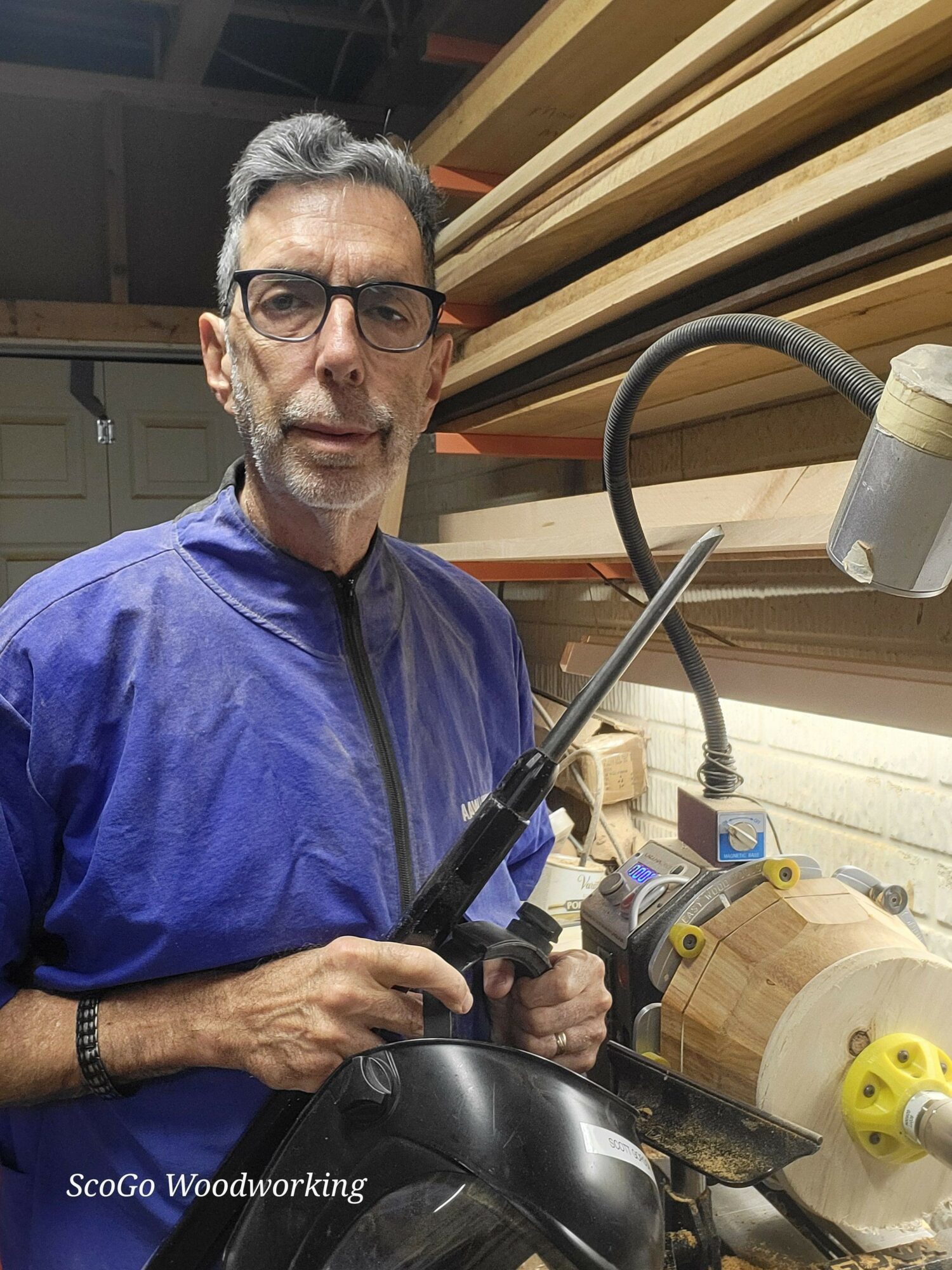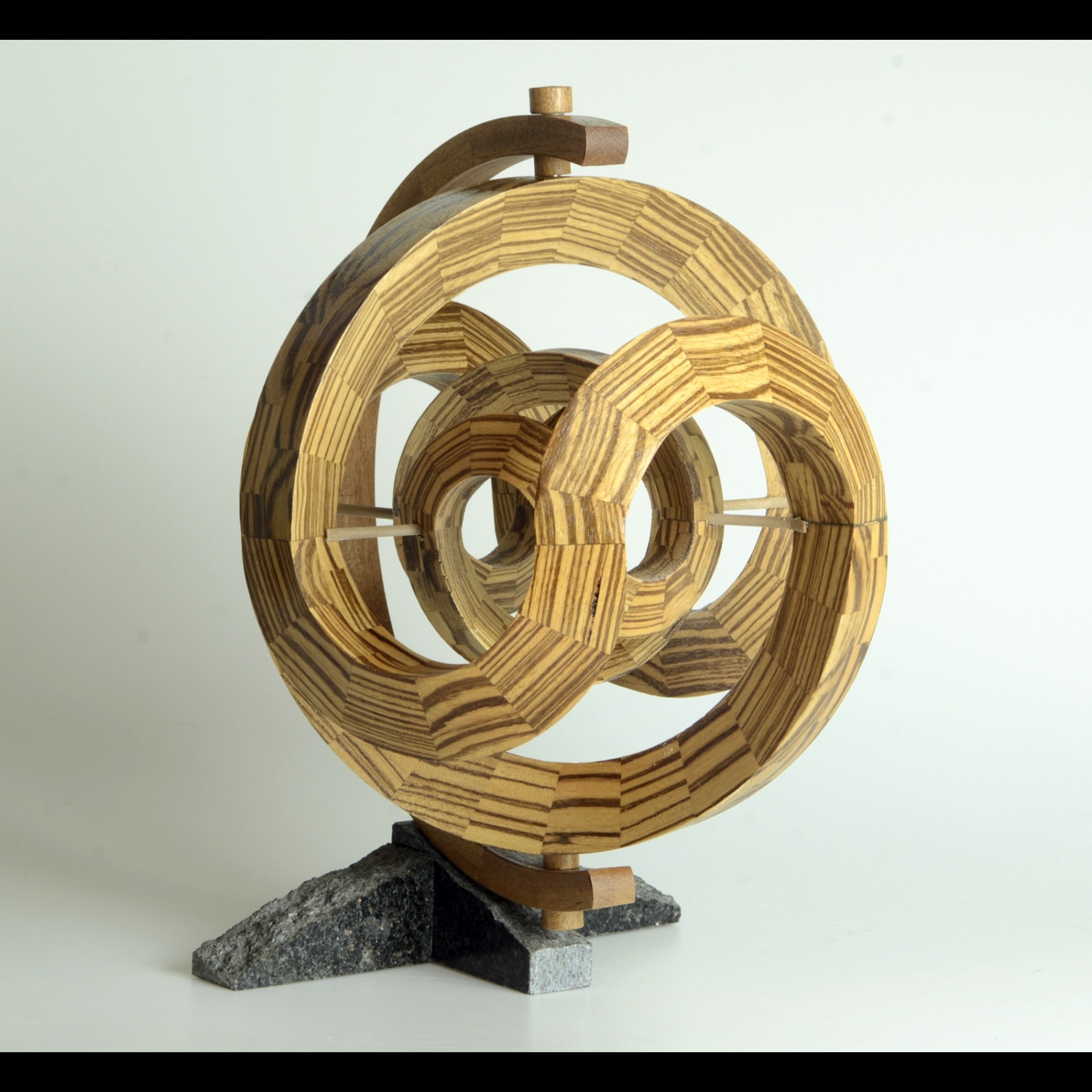

Today we’d like to introduce you to Scott Gordon.
Hi Scott, please kick things off for us with an introduction to yourself and your story.
I’ve always been relatively handy. My father was a watch maker, and while he wasn’t a woodworker, I feel as if I learned the practical aspects of using my hands from him. As a kid, I loved working on projects with him around the house.
The only woodworking class, aside from specific seminars I have attended, was a shop class I took in junior high school. I still have my favorite project from that class – a lamp in the shape of a chess pawn that I turned on the lathe. I often laugh at how that project probably took me the entire 6-week grading period. Now, it would be a weekend project of which the majority of time would be waiting for the glue to dry.
I was also inspired by my scoutmaster, whom I still see whenever possible. He owned a Shopsmith, and members of the troop would often do projects with him. Because of safety guidelines, he was the only one allowed to use the power tools, but it was fun, nonetheless.
Years later, as I started having a growing family, I got my own Shopsmith. My first project was making a cradle that my son used for the first months of his life until my daughter could be moved into a “big girl bed”. I also made a trundle bed and built-in shelves and cabinets for my house, along with toys and other things. But life was busy, and it was mostly project work that I had time to do.
Twenty-plus years later, I decided to return to having fun with the tools and I got into some smaller craft shows. In doing that, I realized that the lathe was my most favorite tool and I decided to focus on that. The work I was doing became more advanced and I eventually outgrew the capabilities of the Shopsmith, so I started buying more professional grade tools. Having these tools has given me the ability to do projects with incredible precision and accuracy.
In my life before retirement, I was in IT and worked with a lot of numbers. The type of woodturning that I do most, segmenting, involves a lot of numbers, calculations and precision. I had never really considered myself to be an artist, but as I use the techniques I have learned, I have evolved. I like to try new things by learning from others, then pushing those new skills into different realms.
I’m sure it wasn’t obstacle-free, but would you say the journey has been fairly smooth so far?
The road has definitely had uphills and downhills. The biggest challenge now is time and market. When I first started making my pieces, I didn’t know what the market would bear, and I was happy just to sell pieces.
As the pieces I make now involve much more skill and time, I have to account for that. I sell my pieces by traveling around the country and attending various art festivals. I used to attend about 10 shows a year; but that was when I would turn several bowls a day. Now, as I’m making pieces with intricate designs that may have thousands of segments of wood in them, it can take over a month to complete a single piece. I have to be much more deliberate in how many shows, and which shows I attend. My current plans are a maximum of 4 shows/year. On occasion, I do get contacted about making commission pieces and I try to fit those into my schedule as well.
As I stated previously, I never considered myself to be an artist. As I’ve accepted that title, my biggest challenge now is becoming a salesman, and I don’t mean that in a negative context. I think the personality of most artists is one of enjoying quiet time in the studio. Going around to art festivals and “selling” my art is hard and I have been working with a sales coach to improve upon that. It is still challenging, but I’m getting better at it.
Thanks – so what else should our readers know about ScoGo Woodworking?
ScoGo is a shortened version of my name, Scott Gordon. Many years ago, I was reading about another creative/business, and I realized that the business name was the contraction of that person’s first and last names. I liked it and thought if I ever had a business, that’s the way I would name it. (I don’t even remember what the business was, but the idea stuck.)
As indicated by the name, my specialty is woodworking. But, more specifically, woodturning. For those unfamiliar, the simplest method of woodturning involves placing a piece of wood on a lathe, turning it around and using various tools to bring it into a pleasing, round (along one axis) shape. I have made the business decision that 99% of what I create and sell will be on the lathe at least one time.
The description above is of the simplest technique of woodturning. One advancement of that is segmented woodturning. In this method, pieces of wood are carefully cut into trapezoid shapes such that when they are put end to end, they will form a ring. Each piece is called a segment. This is a very precise operation as the angles on each end of the segment, as well as the length, need to be the same for the ring to come together without gaps. The number of segments on each ring determines the angle of the cut. I have made some artwork where each ring had 144 segments; the completed piece had over 5600 segments. After everything is glued together, the final shape is established on the lathe.
I have since progressed the nature of segmenting into the production of ribbons. With ribbons, the segmented piece is turned thin, then cut apart and reassembled in different orientations. Using this technique, I have been able to make sculpture and wall art. I have also started adding color to the wall art. While these techniques involve a lot of precision, there is also a level of randomness that gets introduced into the final product and the possibilities are limitless.
I have been commissioned on several occasions to make custom pieces. As long as I can do something for that piece on the lathe, I will likely accept the challenge. One time I was contacted about turning a burl that the customer had been moving around his basement for about 15 years. He now has a one-of-a-kind bowl sitting on his dining room table.
When I used to work in IT, I would look at my watch mid-afternoon and realize how much longer I had to be in the office. When I’m in my studio, I will look at my watch and realize I had missed dinner. This is a labor of love.
My tagline is “Picking up where Mother Nature left off”. I am privileged to work with her as a collaborator.
Are there any important lessons you’ve learned that you can share with us?
I think the most important lesson I have learned along the journey of life is that learning is the key to survival. I was asked by a young boy at an art show what I do when I make a mistake. I explained to him that I carefully analyze what happened that led to the mistake so I don’t repeat it. I also told him when I quit learning as a woodworker/woodturner, I’m going to find something else to challenge me. (That time is a long way off as I am learning new things daily.)
Pricing:
- Depending on the complexity of the piece, pricing ranges from $500 – $6500
Contact Info:
- Website: https://ScoGoWoodworking.com
- Instagram: https://www.Instagram.com/ScoGoWoodworking
- Facebook: https://www.Facebook.com/ScoGoWoodworking

















